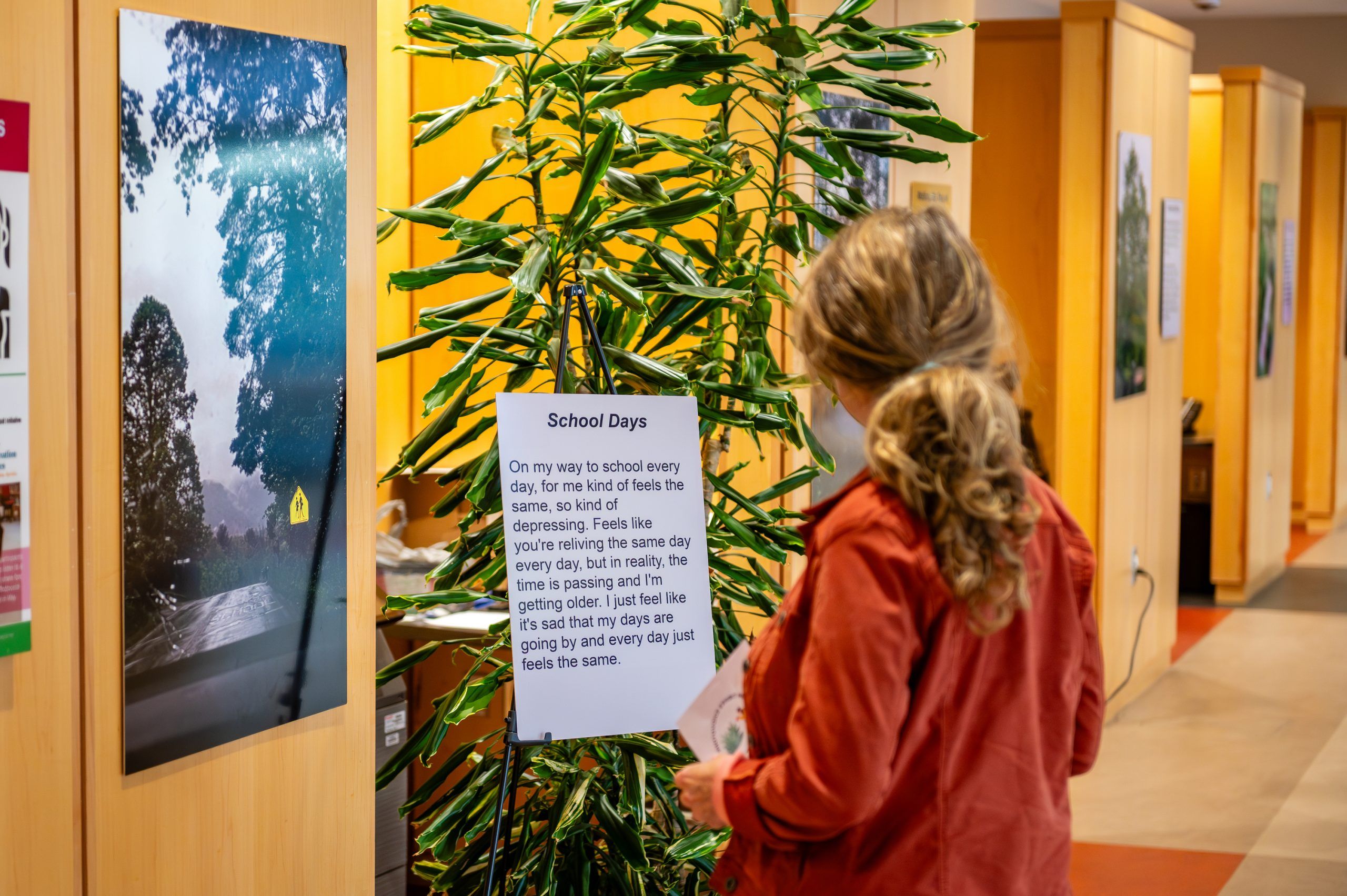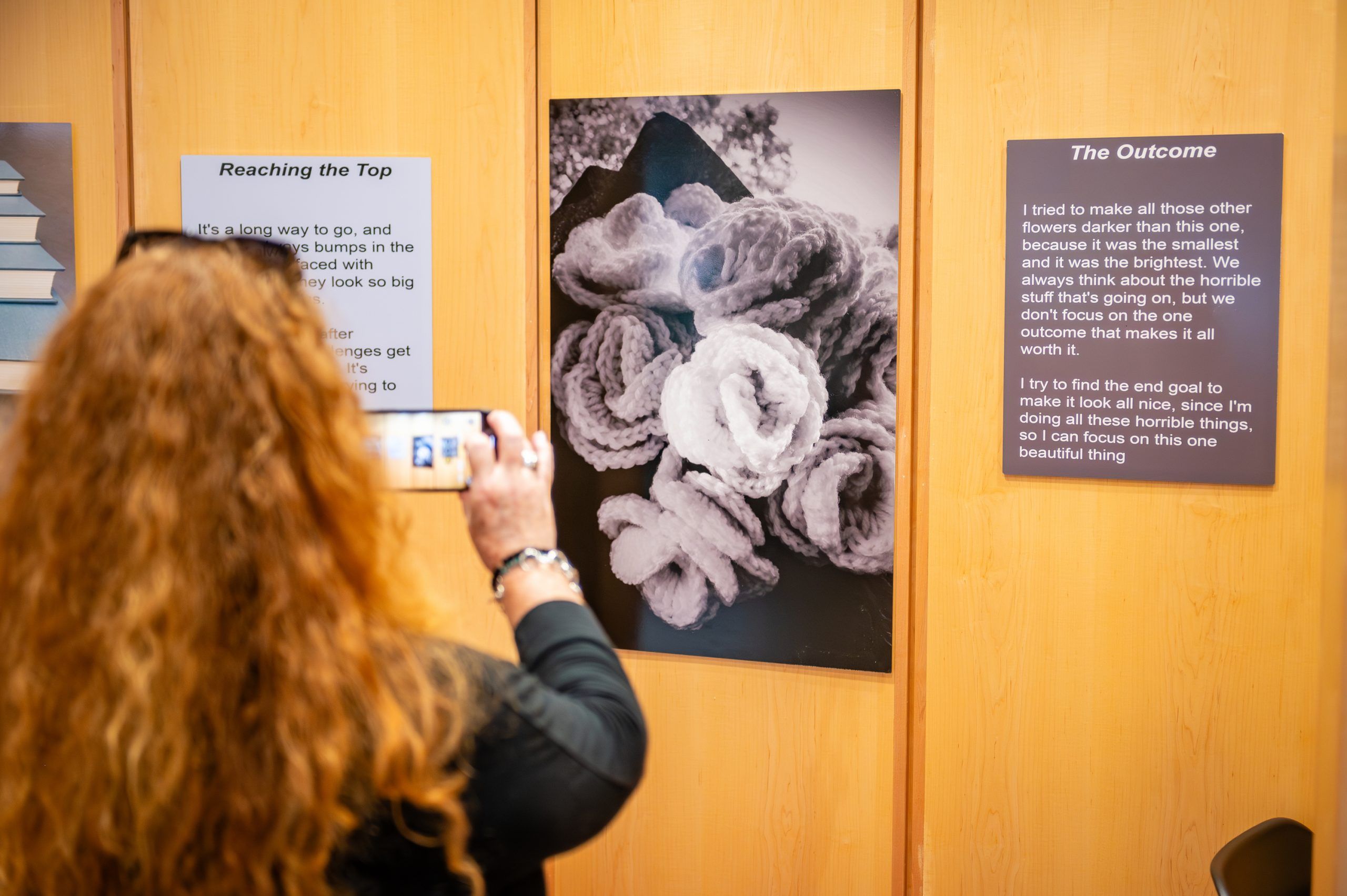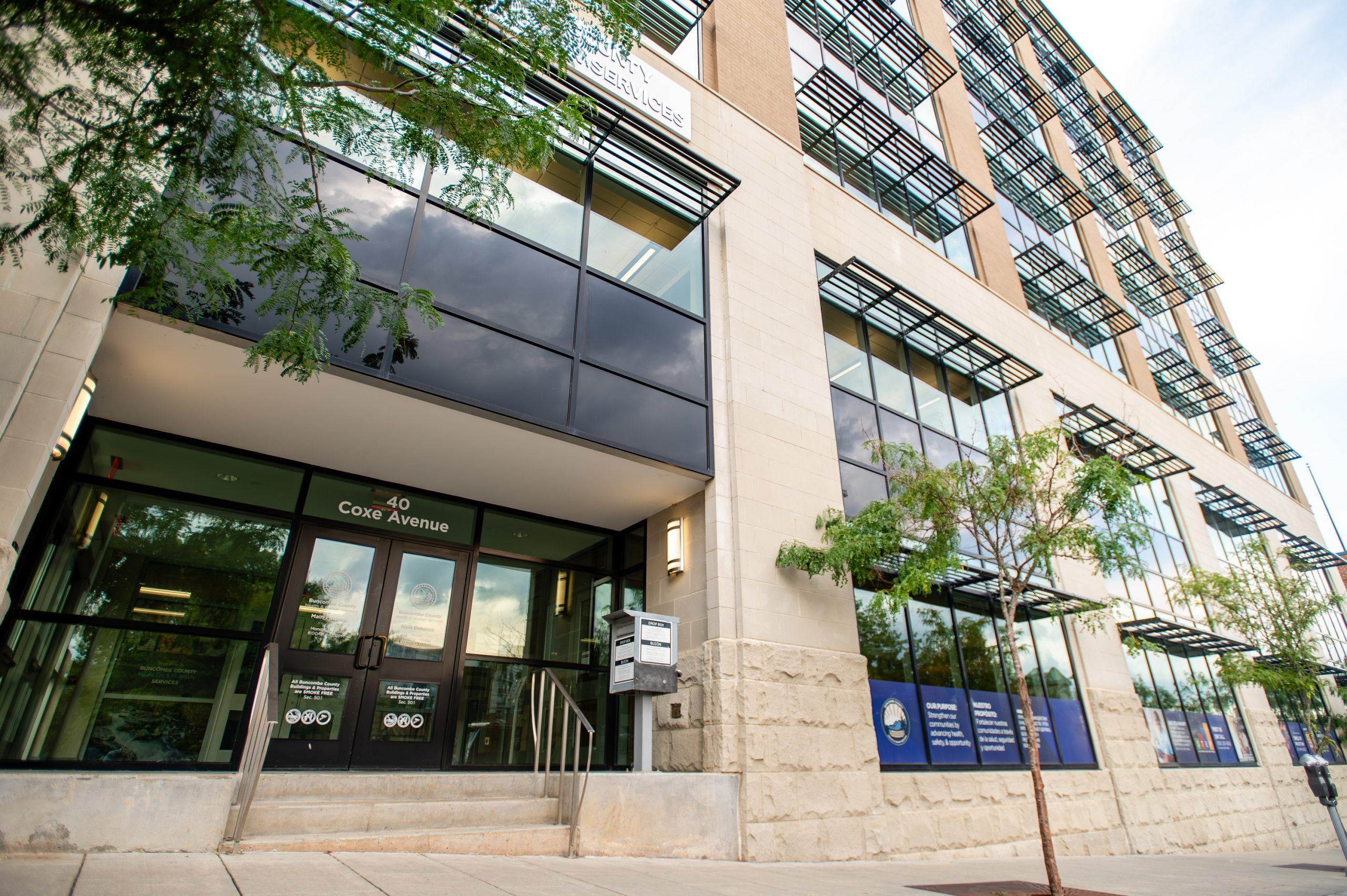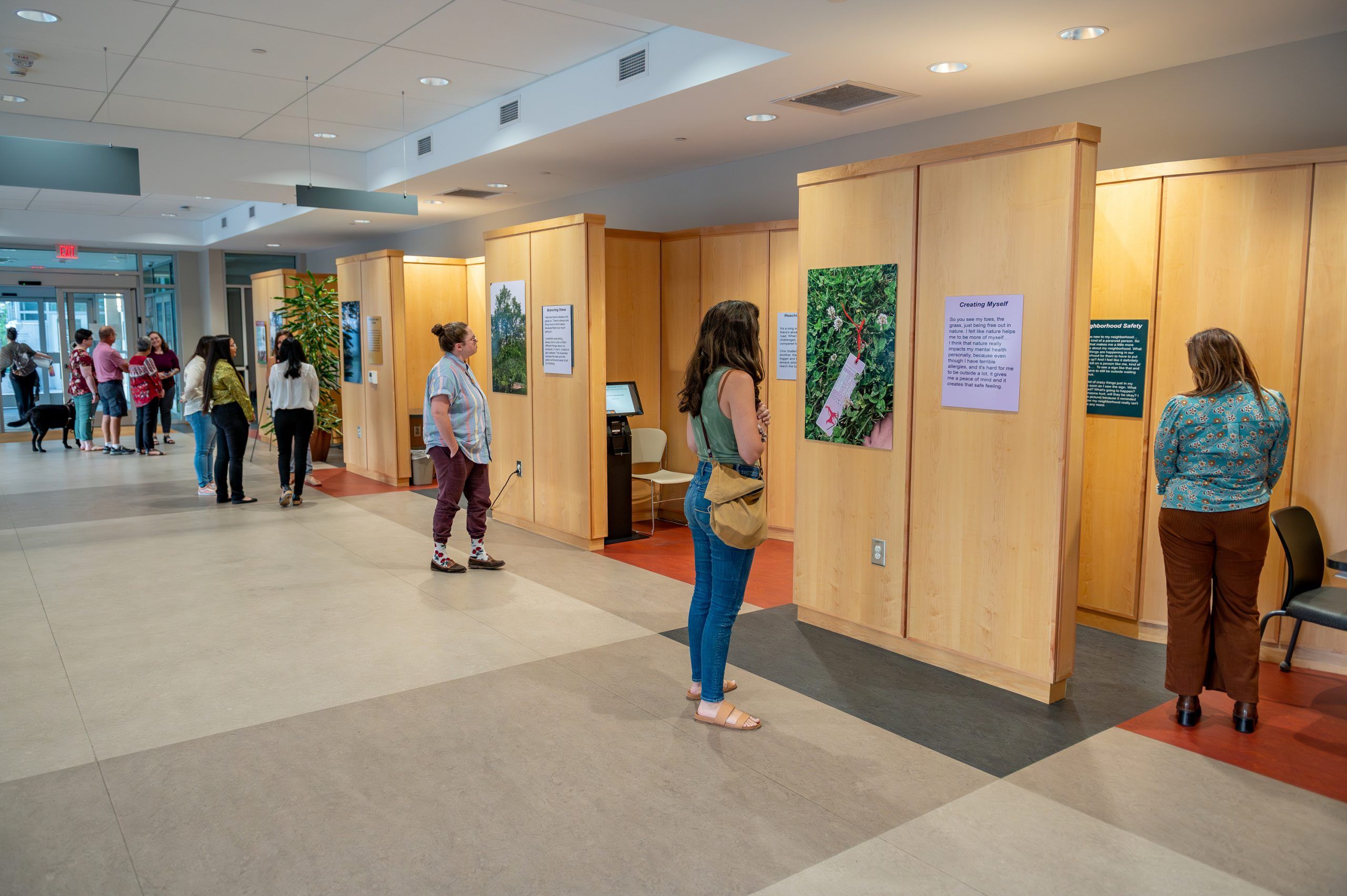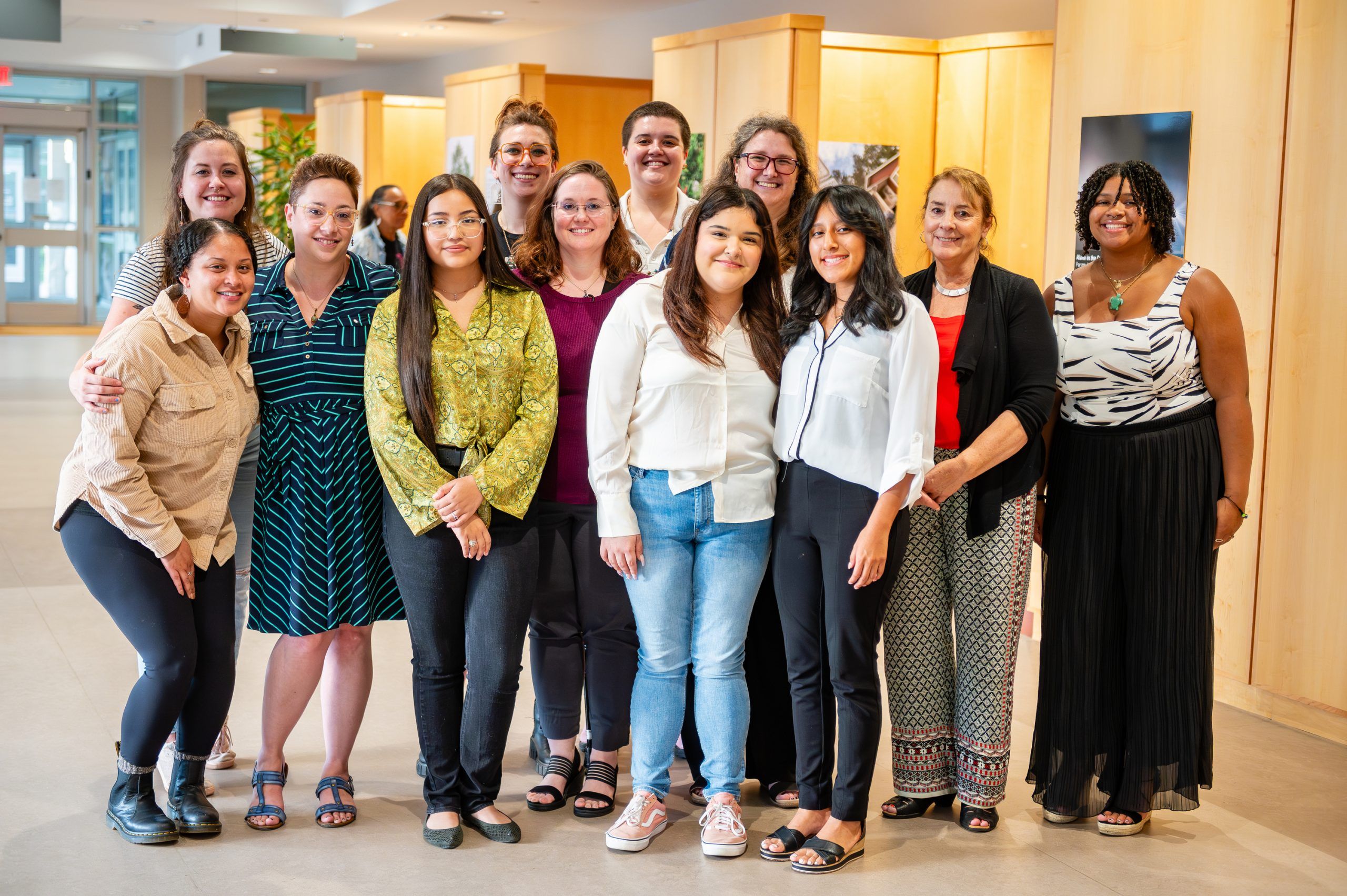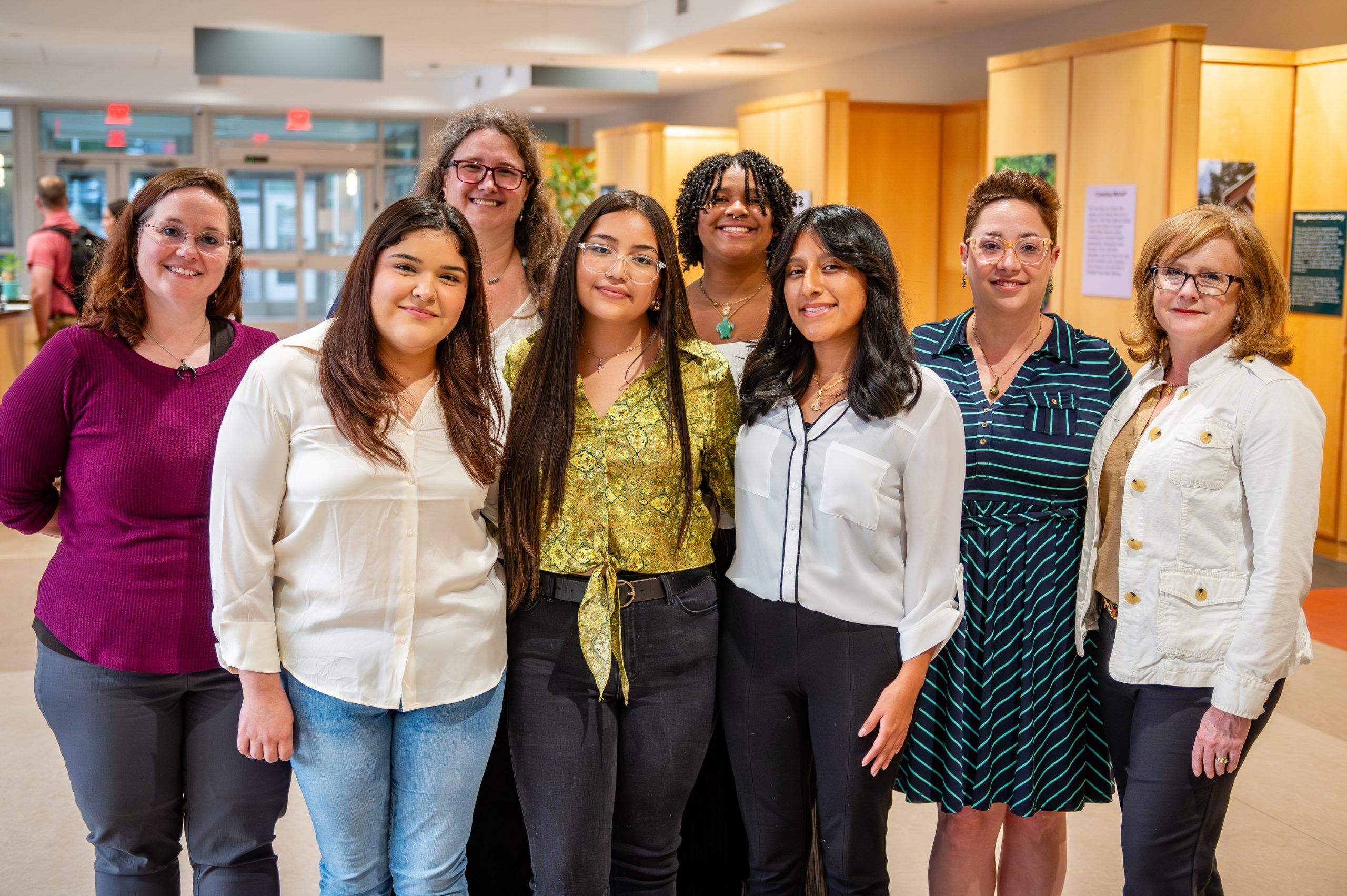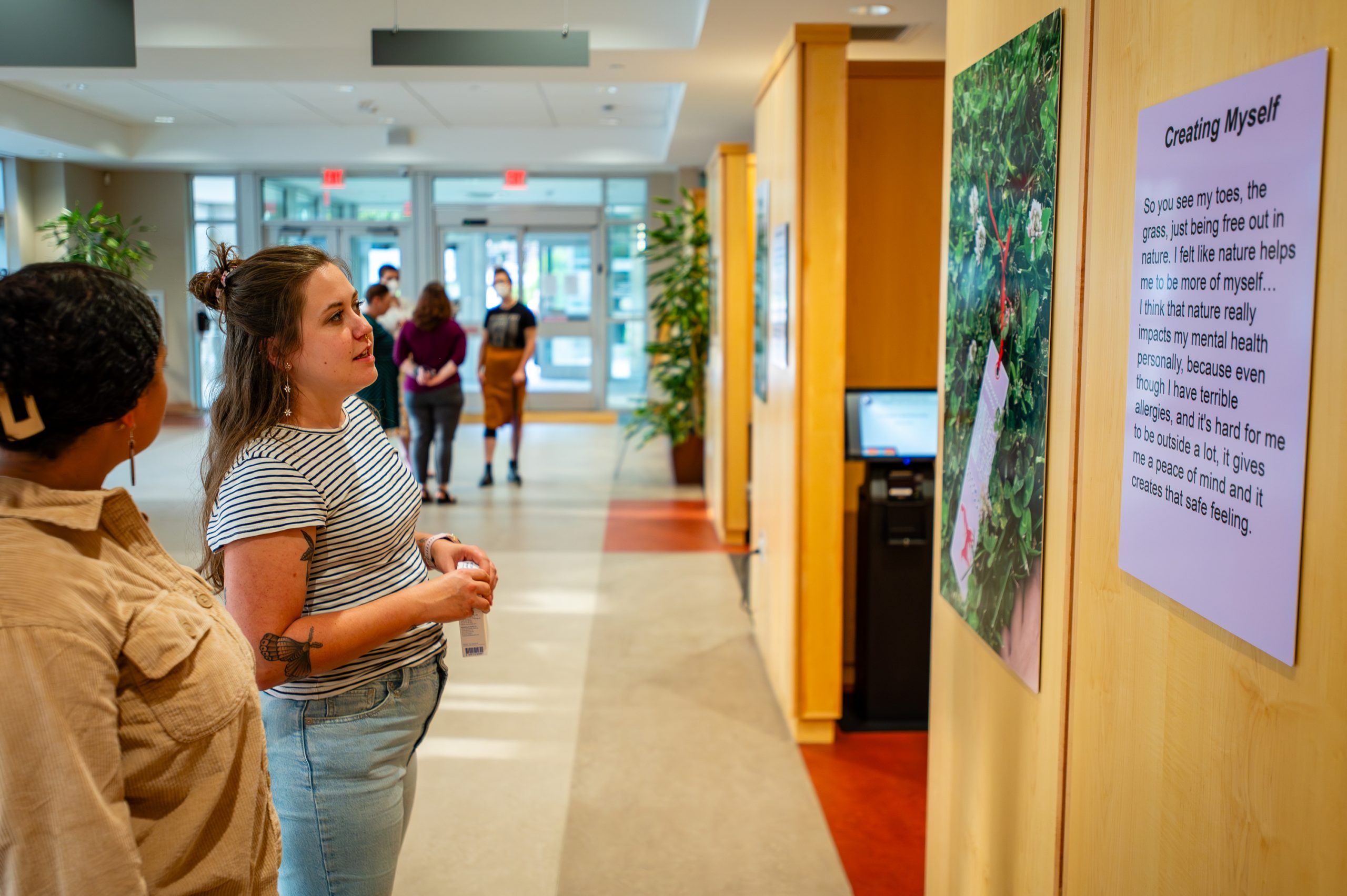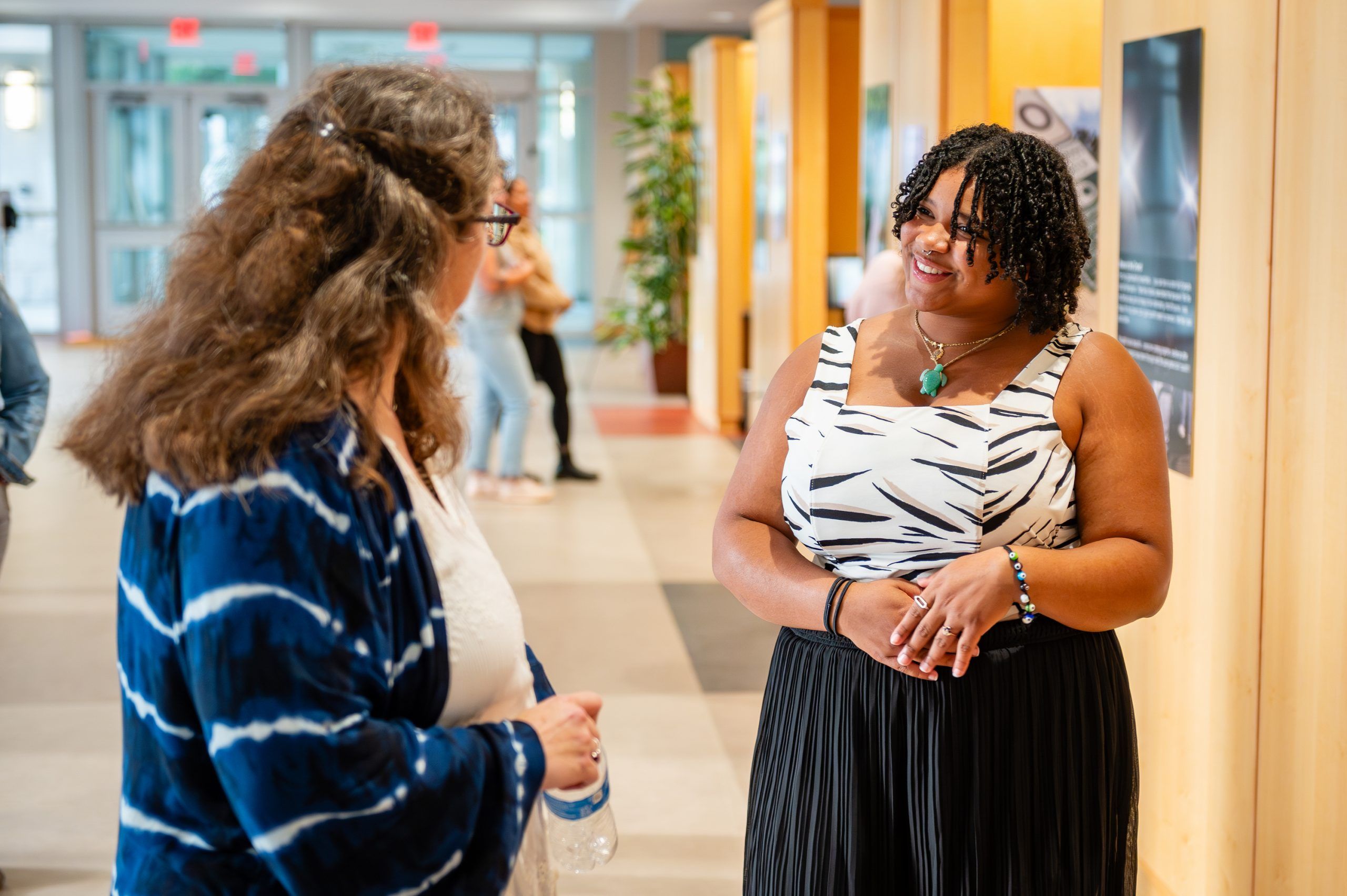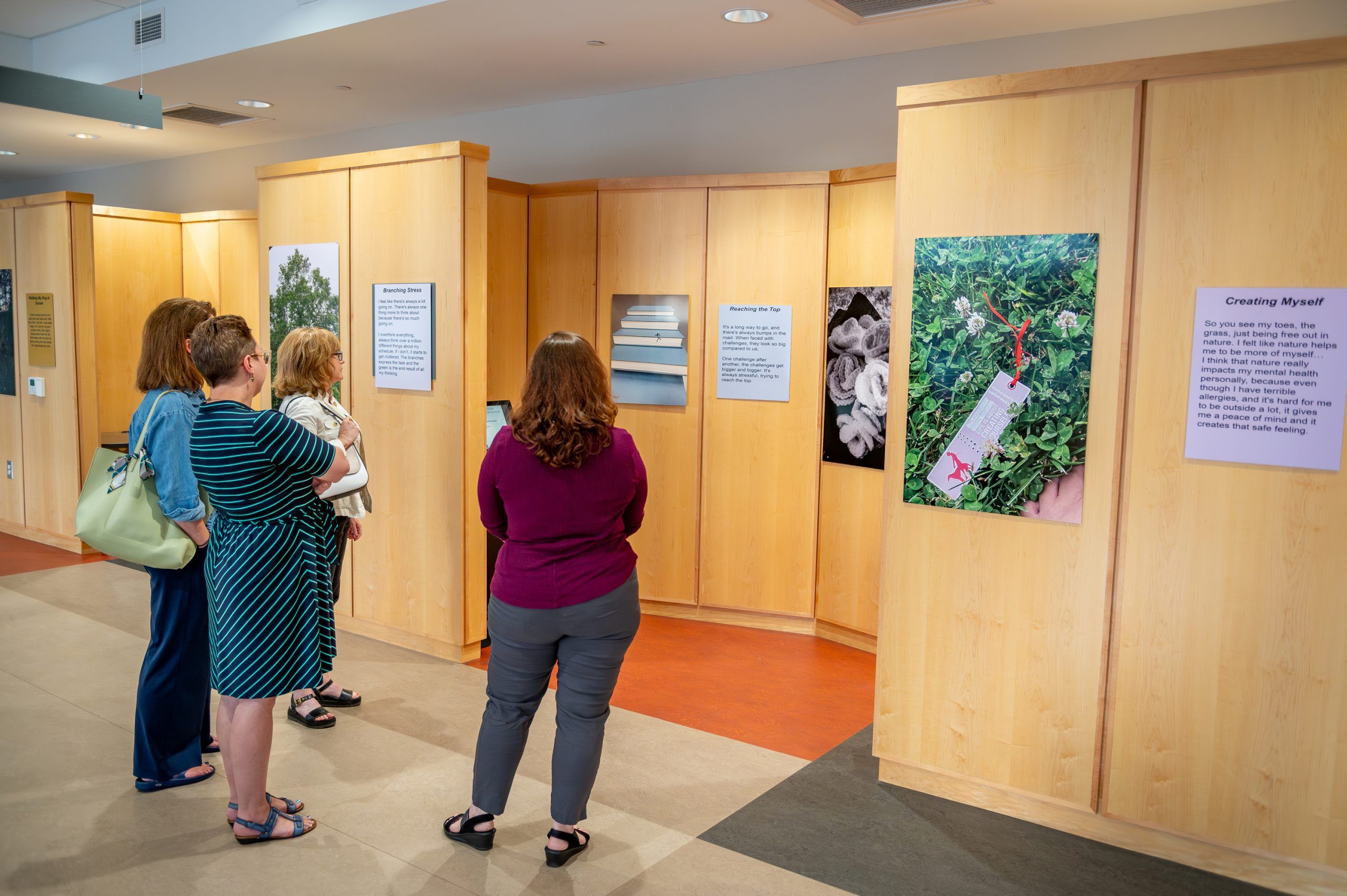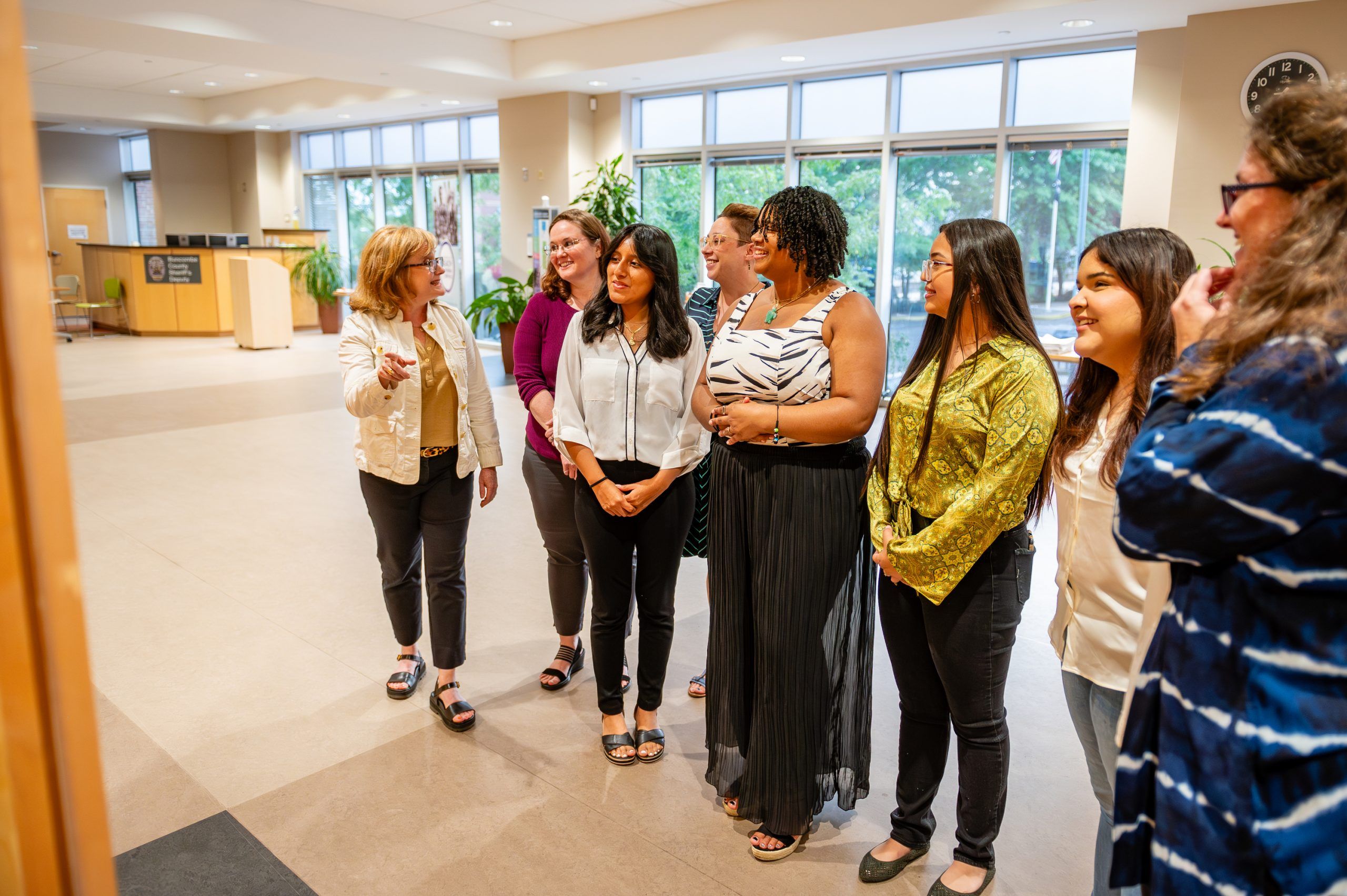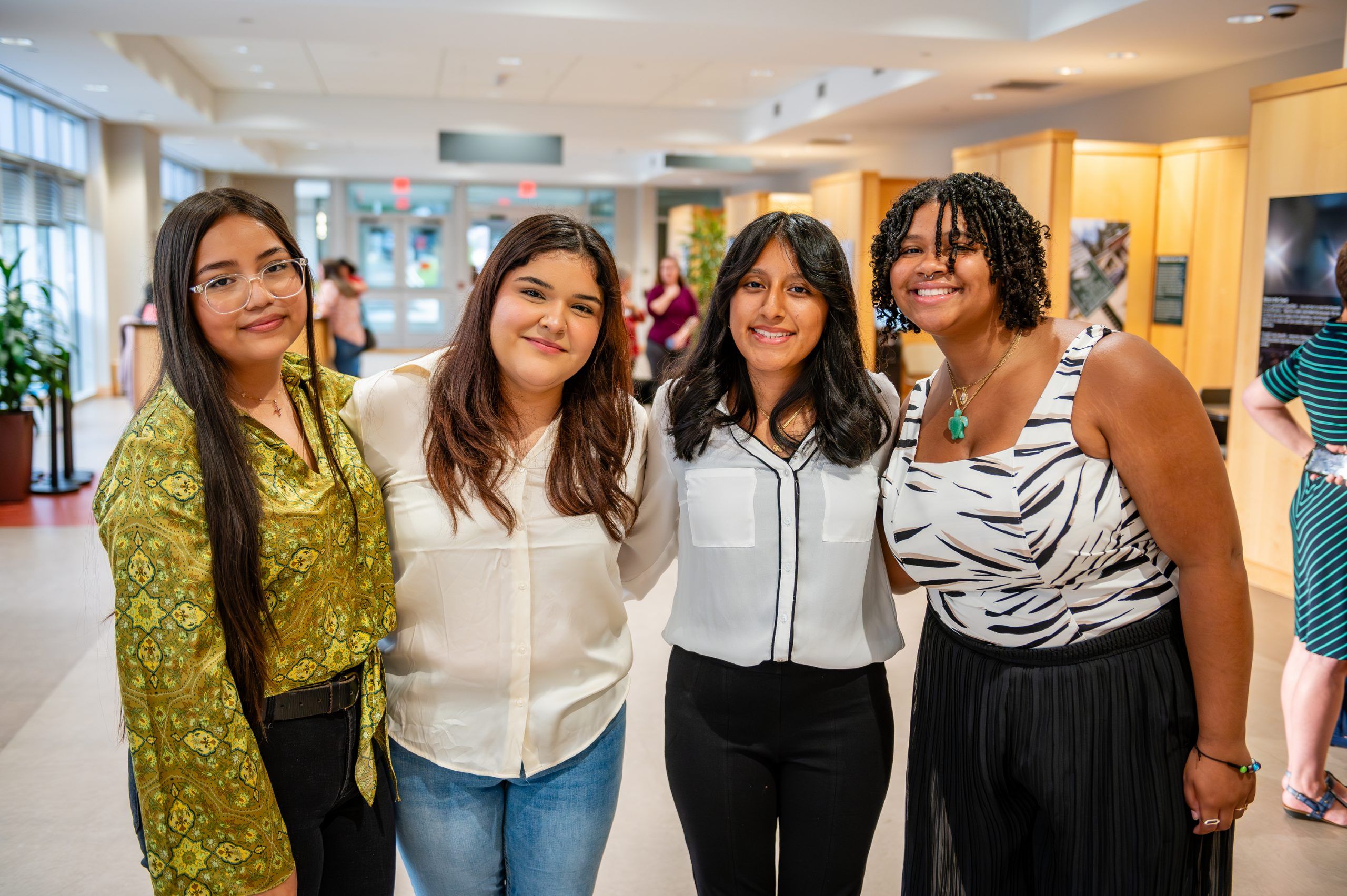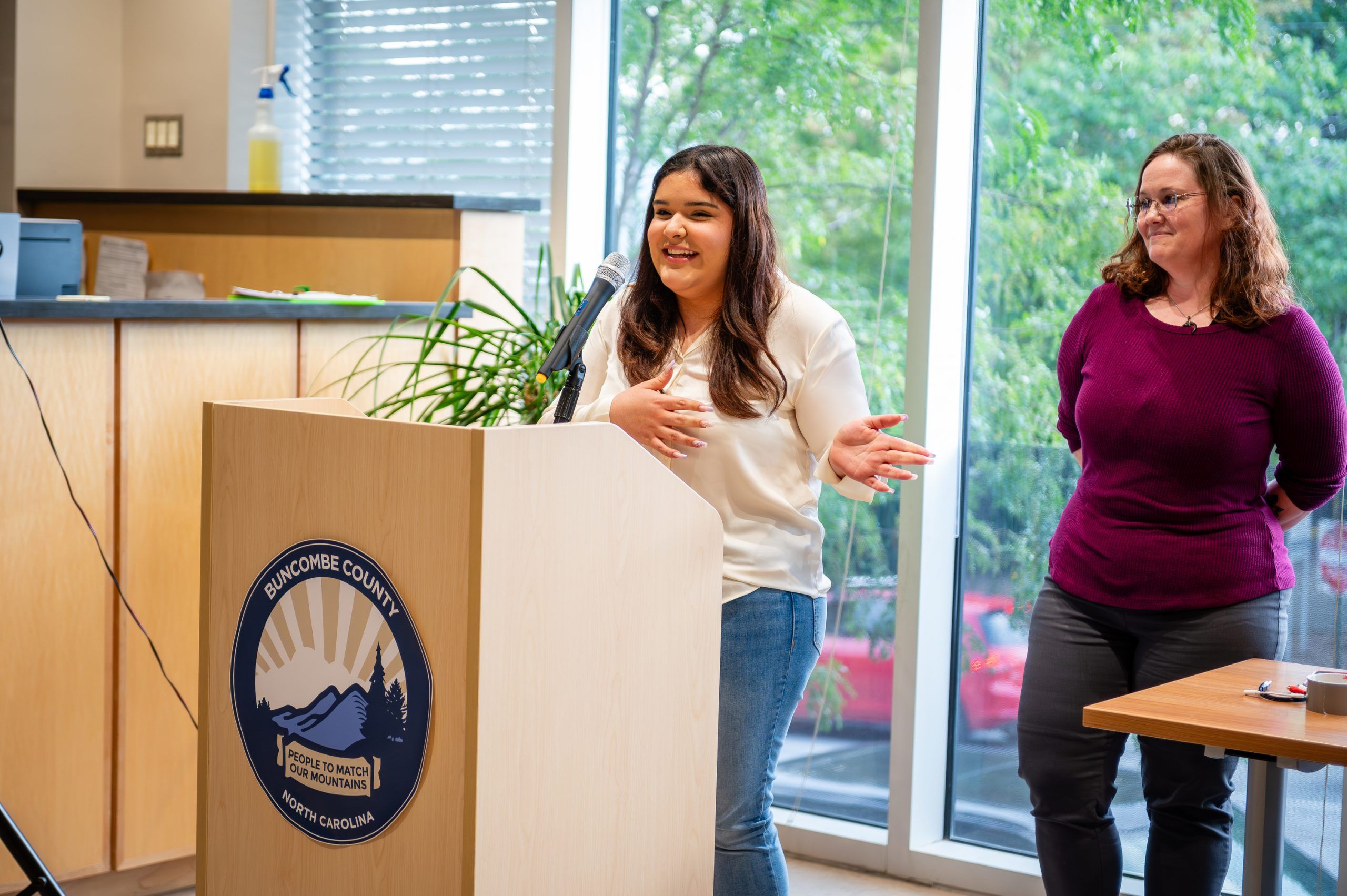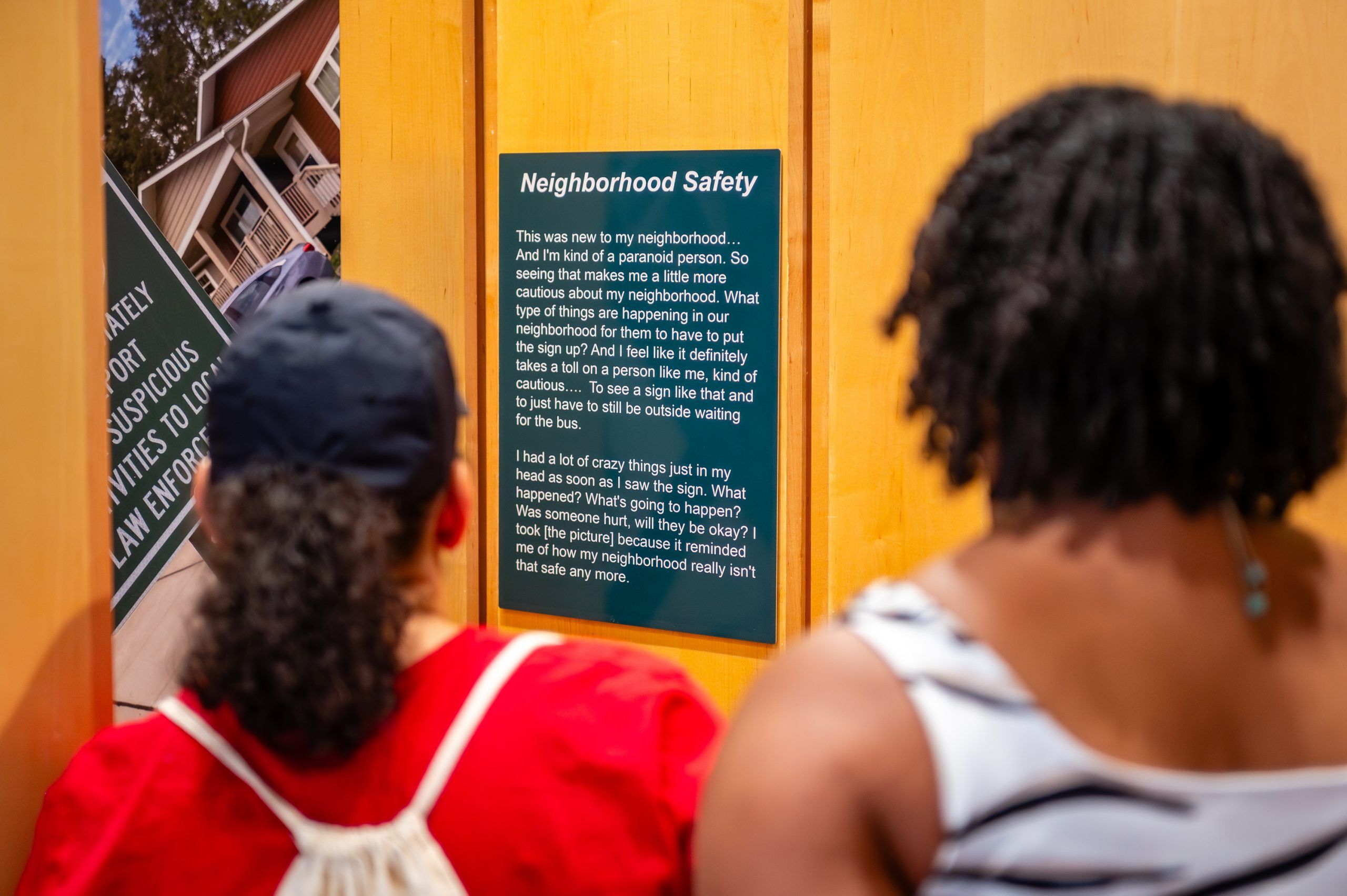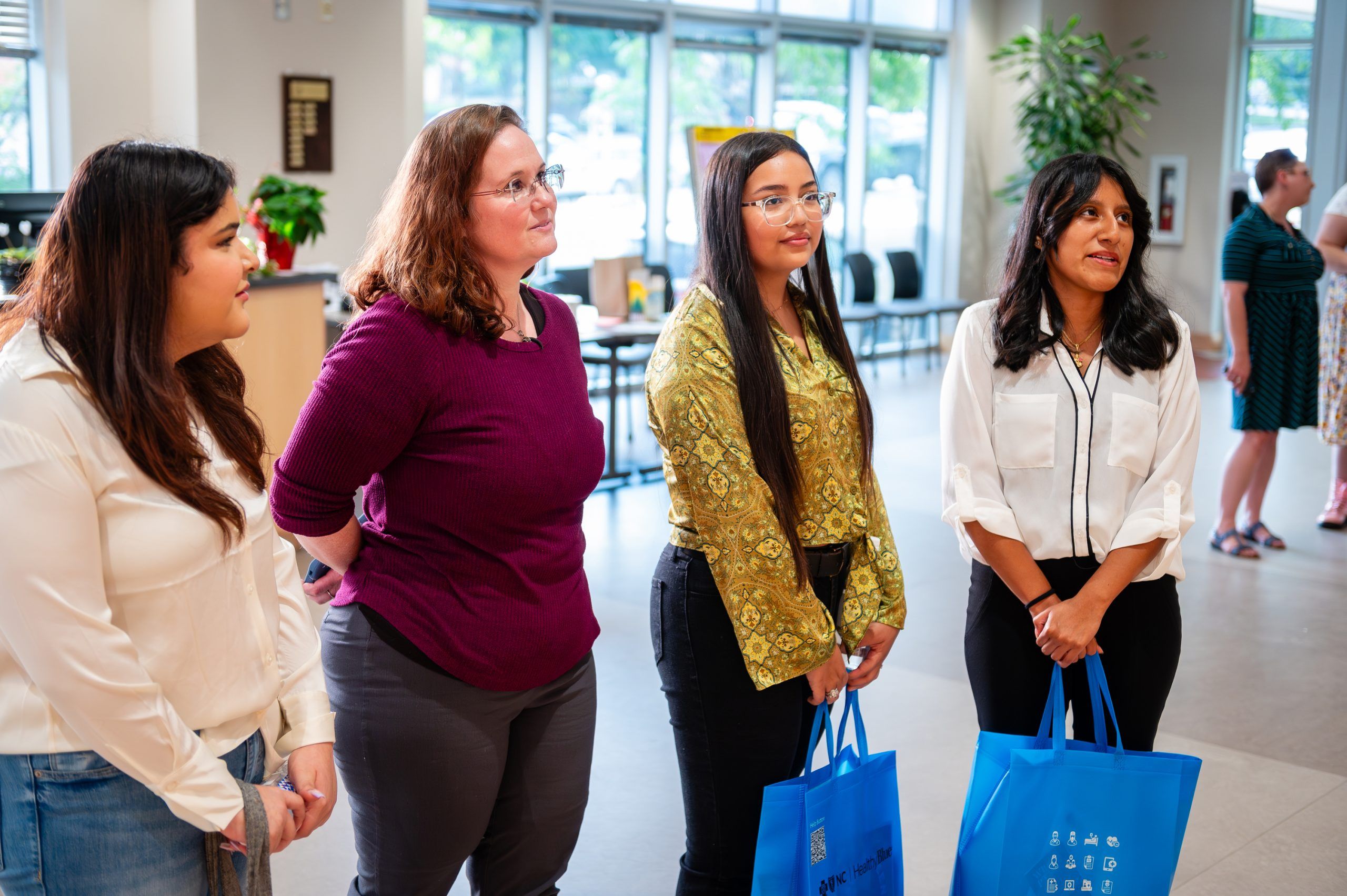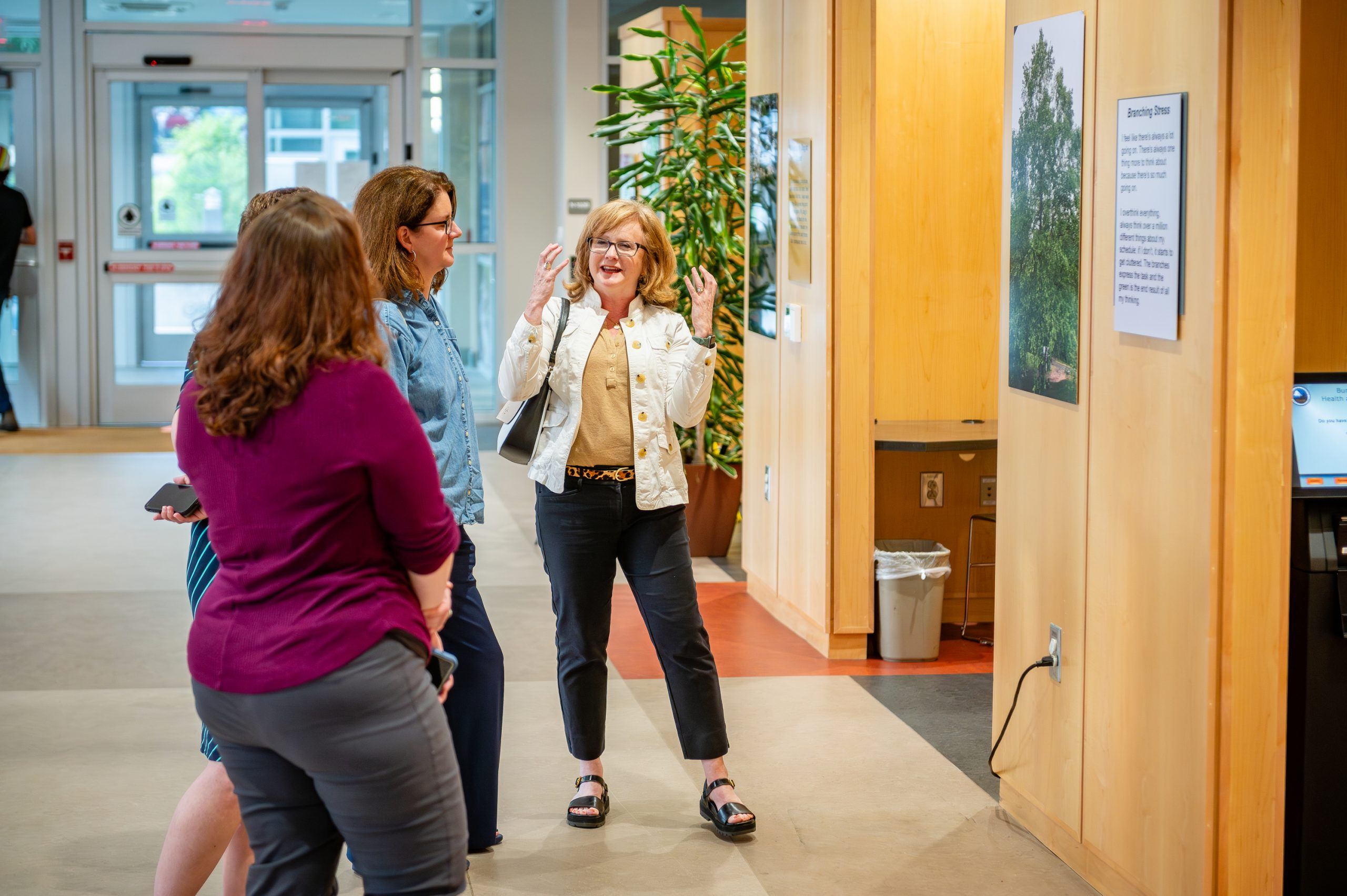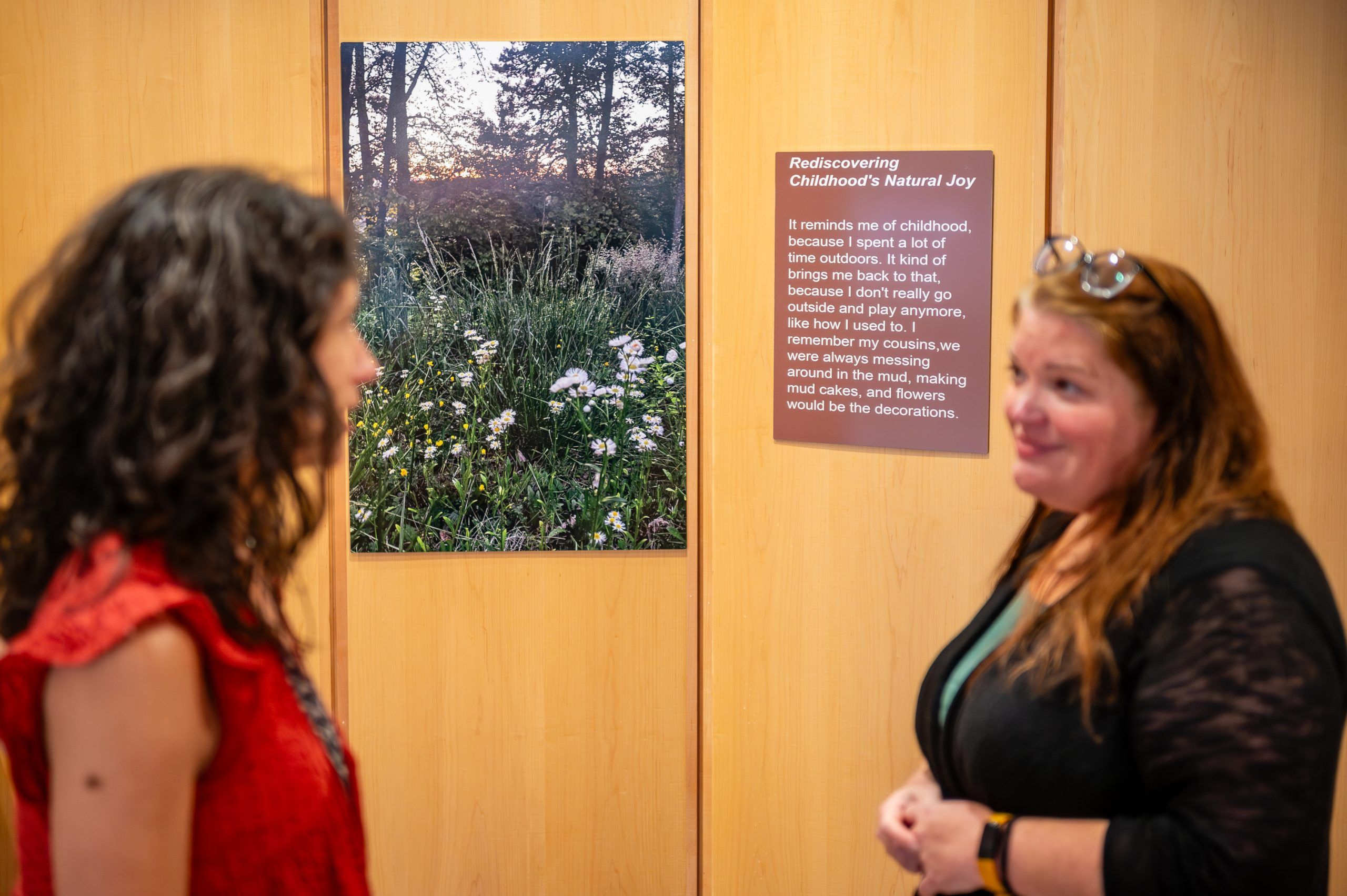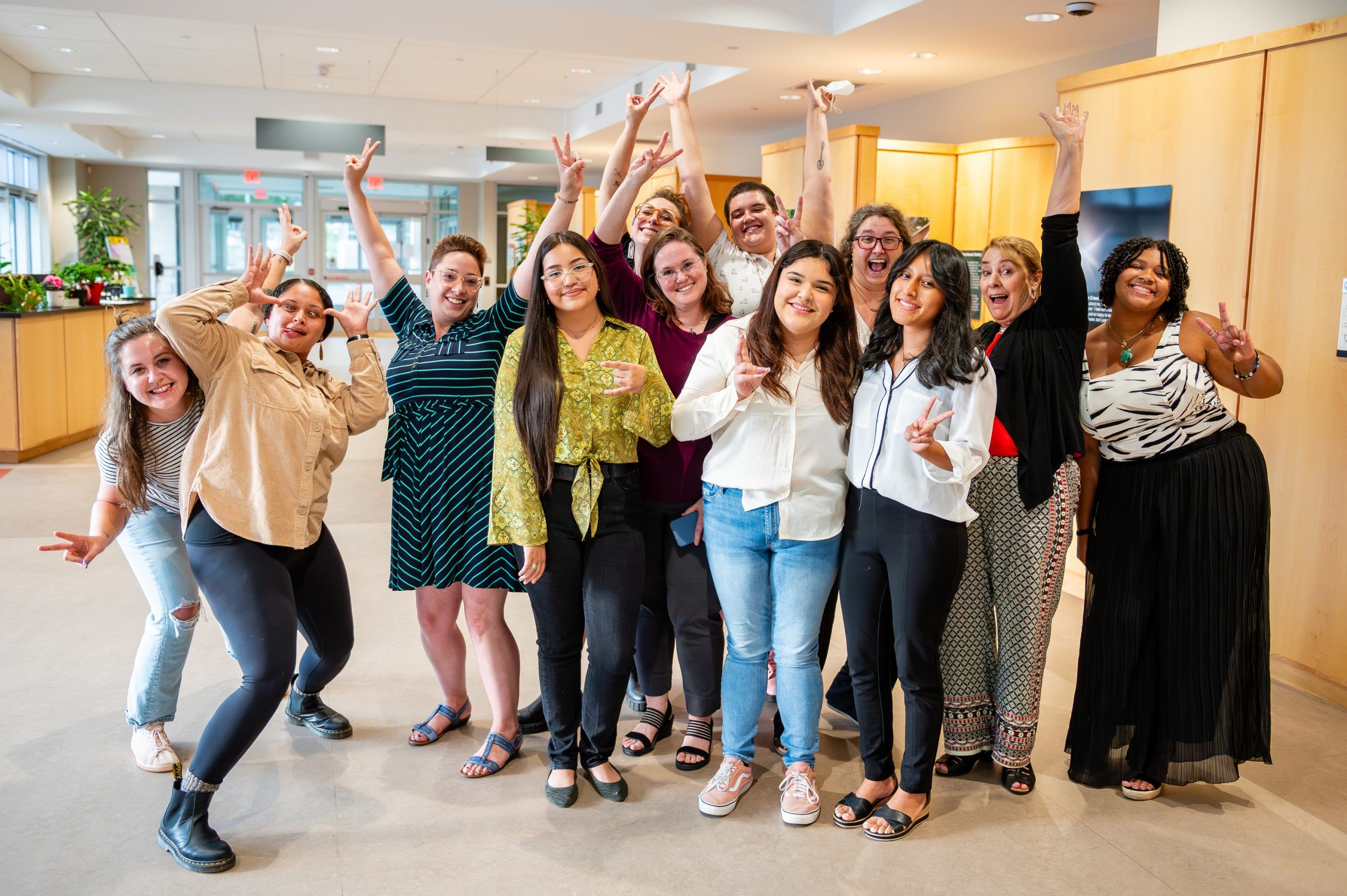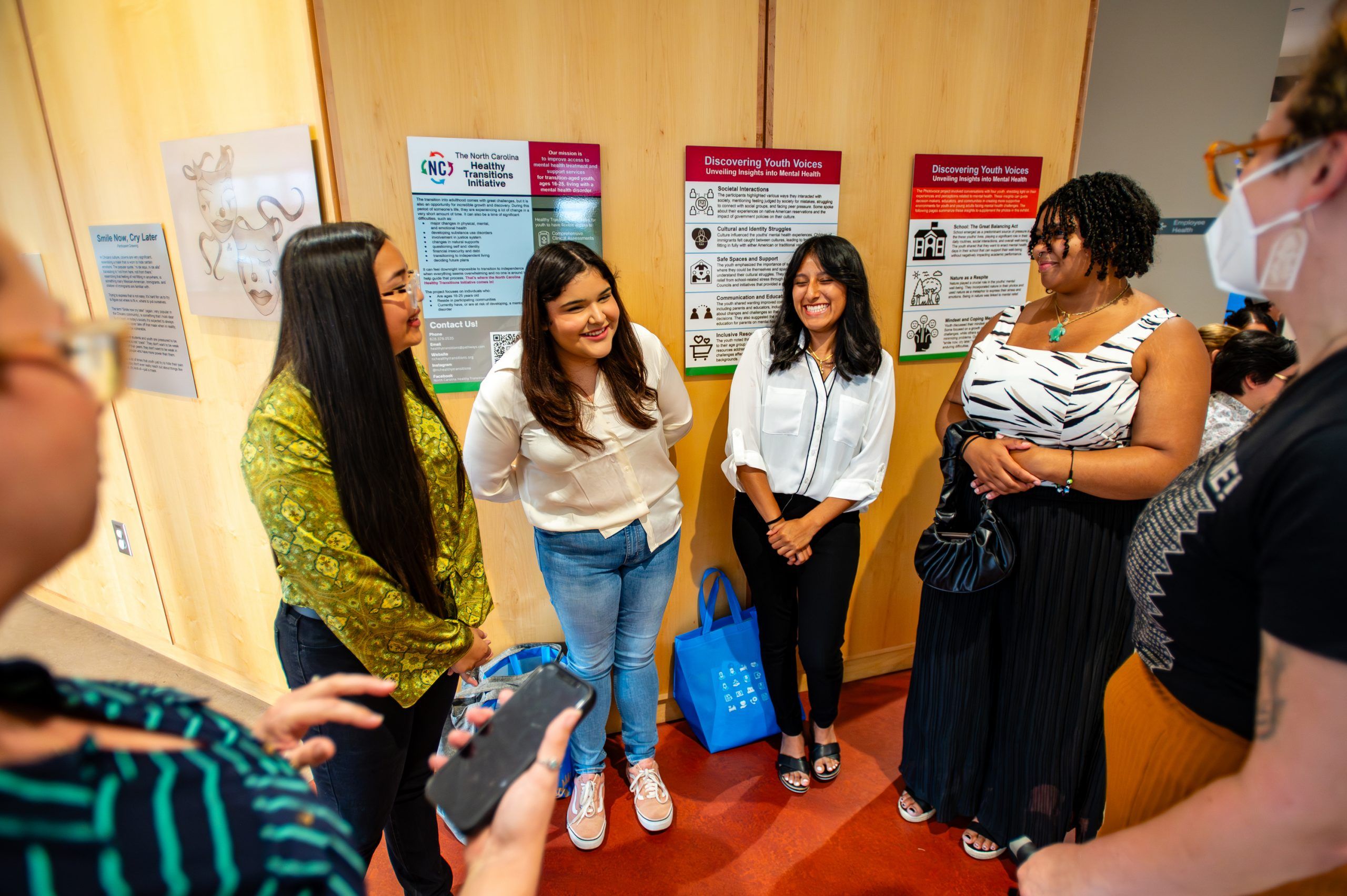Voices, Seen
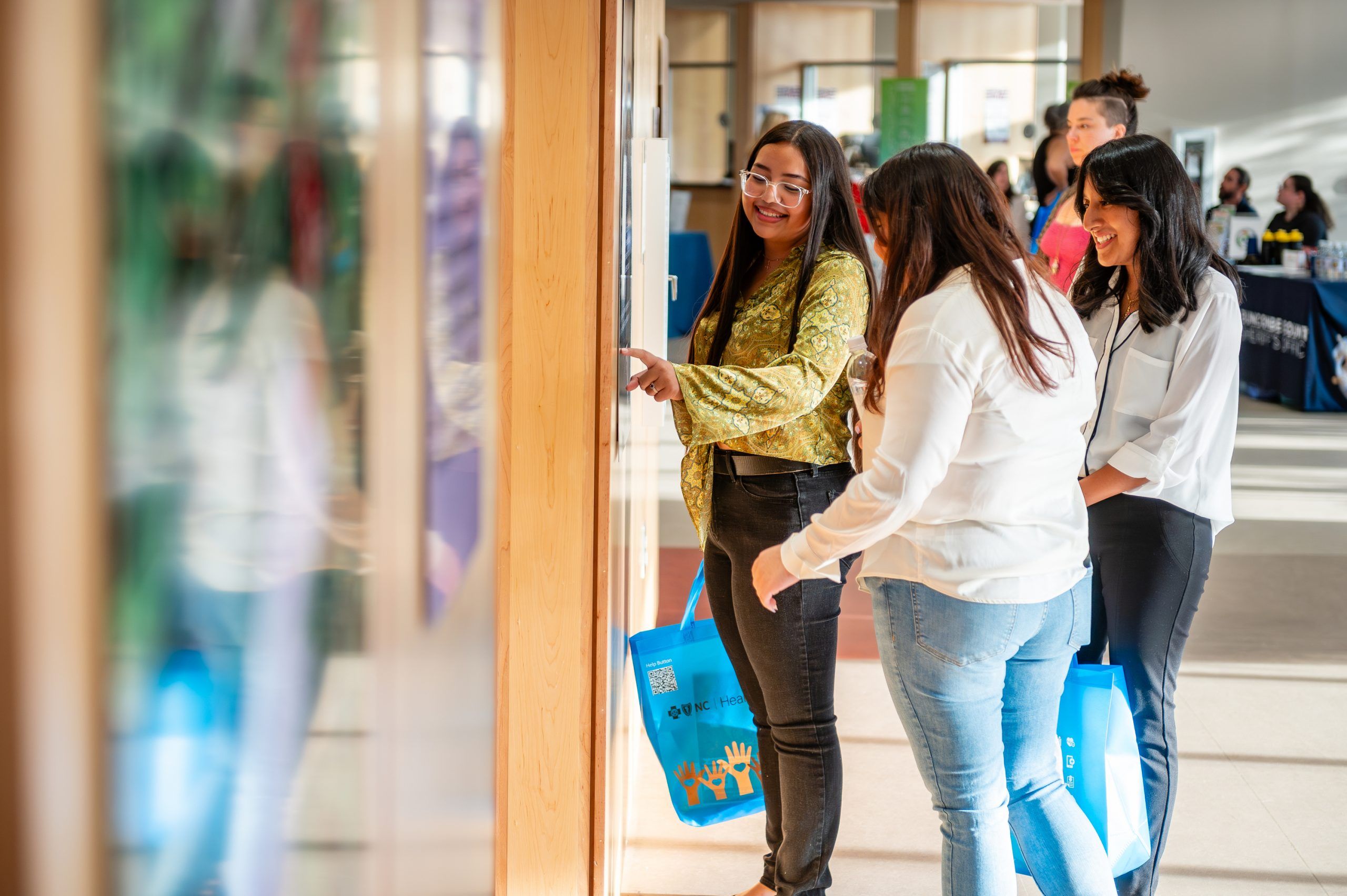
Voices, Seen
A rain-streaked windshield and a street sign don’t normally warrant more than a passing glance.
But four high school students found deeper meaning in them as perfect visuals to express their feelings about mental health.
With help from doctoral student Stacy Huff and the NC Healthy Transitions pilot program, they found a creative approach to depict their experiences when it comes to anxiety, self-esteem, hope, and security.
The students in Buncombe County, North Carolina, first saw their photovoice exhibit unveiled to the public on September 14, in the lobby of Asheville’s new County Health and Human Services building.
This was the first of many stops for the exhibit, comprised of photos participants took while going about their lives. Metal plaques next to each photo share quotes from the students, connecting the images to aspects of their mental wellbeing.
The photo of the windshield in the rain represents a drive to school, and on a deeper level, the stress and repetitiveness of school days.
A black-and-white photo of a crocheted bouquet, with one flower appearing brighter than the others, represents focusing on the outcome. “It represents how this participant tries to focus on a bright spot as a motivation to get through challenges,” Huff says.
A Force for Youth & Families
UNCG’s Center for Youth, Family and Community Partnerships has improved lives across North Carolina for 28 years. Interventions make a deep impact thanks to a commitment to evidence-based research, strong partnerships, and guidance from community members with lived experiences.
A critical time in the lifespan for addressing mental health challenges is during the transition from adolescence to young adulthood.
Youth already receiving mental health services oriented towards children will sometimes disconnect from needed supports during this period instead of transitioning to adult-oriented services, says NC Healthy Transitions director Willow Burgess-Johnson. Others will face mental health and substance use challenges for the first time.
The NC Healthy Transitions pilot program supports youth between the ages of 16 and 25 who experience behavioral health challenges, offering developmentally appropriate services ranging from clinical assessments to job support.
Person-centered, community-oriented
Suicide is one of the top five leading causes of death for people ages 10 to 65 in the state. As awareness grows about mental health, Huff, who is getting her doctoral degree in educational research methodology, wants to help get resources into the hands of young people.
It was important for Huff to not only put young people at the center of her research, but to give them a voice in the process. “As much as you might presume to know what they’re going to say or what they want, you really don’t,” she says.
It’s one reason she uses photovoice, a research method that employs photography to break down and explore social issues.
“It’s community-based action research,” she says. “It involves participants in the data collection, and it gives results back to the community as a traveling exhibit.”
The idea was attractive to her mentor Dr. Tiffany Tovey, who connected her with the NC Health Transitions Program, for which Tovey is an external evaluator. “Pictures tell deep stories and encourage people to reflect on their own experiences,” she says.
“Stacy’s photovoice project falls right in line with our program’s valuing of youth voice and choice, of reflecting actual experiences of youth,” says project director Willow Burgess-Johnson.
Tovey granted Huff’s request to lead the project. “I have an enormous amount of gratitude,” Huff says. “She let me take charge but was always my safety net.”
Huff adds that her work reflects the UNCG School of Education’s emphasis on cultural responsiveness. “To be culturally responsive, you need to give back as well as take. You’re not just taking data. You’re also giving back to that same community.”
Youth participants Stephanie Blas, Liliana Guapia, Londyn Suver, Judy Felipe Cruz attend the exhibit opening, along with Stacy Huff, Willow Burgess-Johnson, Dr. Tiffany Tovey and other representatives from the NC Healthy Transitions Project, representatives from project partner Buncombe County, representatives from CYFCP community partner Family Presentations Services, and a public health advisor from SAMSA, which funded the project.
Creativity takes flight
To develop the exhibit, participants took photos with some guidance from a professional photographer, presented them to the group, and explained their meaning.
One photo of a community watch sign came as a surprise to Huff until she heard a student’s explanation. “It filled them with anxiety. It prompted them to wonder why they needed to have a neighborhood watch. Did somebody get hurt? Would it be safe for them to play outside?”
“That’s something that a lot of us take for granted.”
September’s unveiling was the first of many stops for the display, which traveled across western North Carolina and was seen by community decision makers including healthcare providers and government officials.
“We want to share a sense of the broader community,” says Huff. “What are they seeing in their lives that’s helping, or not helping, or making it worse?”
Huff also presented her work at the American Evaluation Association’s October conference to help her peers adopt and apply the process.
“To see something that was just an idea, now out in the world, is just phenomenal,” she says.
Tovey says, “It was so fulfilling to see the photovoice exhibit during opening night. It’s getting such an important topic in the public eye, for folks to reflect on and hopefully take action for.”
